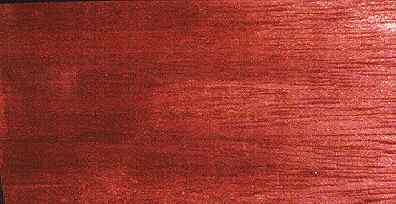
Nyatoh (Palaquium philippense)
Family: Sapotaceae
Common names: Belian, Bitis, Blam, Kerit, Mayang, Nyatoh
Distributed in: Malaysia, Papua New Guinea, Philippines (Oceania and S.E. Asia)
Distribution overview: Nyatoh occurs extensively from Southeast Asia to the Philippines. It grows from Sumatra, throughout the Malay Peninsula to Borneo.
Common uses: Beams, Bedroom suites, Building construction, Building materials, Cabin construction, Cabinetmaking, Chairs, Chests, Concealed parts (Furniture), Concrete formwork, Construction, Core Stock, Decks, Decorative plywood, Decorative veneer, Desks, Dining-room furniture, Dowell pins, Dowells, Drawer sides, Excelsior, Exterior trim & siding, Exterior uses, Factory construction, Figured veneer, Fine furniture, Floor lamps, Form work, Foundation posts, Framing, Furniture , Furniture components, Furniture squares or stock, Hatracks, Heavy construction, Interior construction, Interior trim, Joinery, Joists, Kitchen cabinets, Light construction, Living-room suites
Environment profile: Status within its natural growth range has not been officially assessed
Tree size: Trunk diameter is 100-150 cm
Colors: the heart isBrown, Redand the sapwoodYellow, Yellowish.The grain isEven
The grain is straight to shallowly interlocked. The timber is reported to resemble Makore, (Tieghemella heckelii) in appearance, and has a moire or watered silk figure
, the textureMedium coarse to coarse
Natural durability: Sapwood susceptible to attack by powder post beetles, Susceptible to insect attack
Odor: No specific taste
Freshly milled wood has a slight unpleasant odor which is described as sour
Silica Content: High
Some Palaquium timbers are siliceous
Kiln Schedules: UK=E US=T6D2/T3D1 Fr=5
Kiln Drying Rate: Naturally dries slowly
Drying Defects: May end-split and warp during drying. , Splitting
Ease of Drying: Slowly
Comments: Palaquium and Payena are two separate but closely related genera, which are very similar in characteristics. They produce wood that are usually grouped in the Nyatoh or Bitis class. Nyatoh is a commercial grouping of species whose air-dry weights fall mostly between 38 and 45 lb/cu.ft or (610 and 720 kg/cu.m), but may be up to to 55 lb/cu.ft (880 kg/cu.m). They are often mixed and marketed with other light to medium-weight, red-colored timbers. Timbers in the Bitis class are described as heavier, and have weights greater than 55 lb/cu.ft (880 kg/cu.m). They are referred to as Nyatoh batu in Sabah (Malaysia)
Blunting Effect: High to severe
Cutting edges may blunt severely, depending upon the amount of silica in the wood
Cutting Resistance: Fairly Difficult to Very Difficult to saw
Sawing properties are reported to vary with species. Some Palaquium timbers contain silica, which makes them very abrasive and very difficult to saw with ordinary saws. There may also be some gum build-up on cutters
Nailing: Pre-Boring Recommended
Planing: Fairly Difficult to Very Difficult
Some Palaquium species are siliceous and gummy. They are rather difficult to work in planing, moulding, boring, and other woodworking operations since they tend to dull and gum-up cutting tools rapidly. Non-siliceous species are relatively easy to work, and finish to yield a smooth surface
Resistance to Impregnation: Sapwood is permeable
Response to hand tools: Fairly Difficult to Difficult to Work
Response to hand tools is dependent upon amount of silica and gum in the wood. Non-siliceous and non-gummy wood tend to work easier with hand tools
Polishing: Very Good to Excellent;
- Numerical data Metric
- Numerical data English
- Strength properties
- References
 |
 |
 |
 |
| Item |
Green |
Dry |
Metric |
| Specific Gravity |
|
|
|
| Density |
|
608 |
kg/m3 |
| Bending Strength |
538 |
824 |
kg/cm2 |
| Crushing Strength |
37 |
58 |
kg/cm2 |
| Hardness |
|
|
kg |
| Impact Strength |
|
|
cm |
| Shearing Strength |
|
62 |
kg/cm2 |
| Stiffness |
81 |
96 |
1000 kg/cm2 |
| Tangential Shrinkage |
|
|
% |
| Radial Shrinkage |
|
|
% |
| Weight |
|
|
kg/m3 |
| Maximum Load |
232 |
|
cm-kg/cm3 |
| Toughness |
|
|
cm-kg |
| Static Bending |
294 |
459 |
kg/cm2 |
|
 |  |  |  | | Item | Green | Dry | English | | Bending Strength | 7652 | 11720. | psi | | Crushing Strength | 537 | 833. | psi | | Density | | 38 | lbs/ft3 | | Maximum Crushing Strength | 3540 | 5673. | psi | | Shearing Strength | | 892 | psi | | Static Bending | 4189 | 6531. | psi | | Stiffness | 1159 | 1370. | 1000 psi | | Work to Maximum Load | 3305 | | inch-lbs/in3 | | Specific Gravity | 0.41 | | | |
Maximum crushing strength, or compression parallel to grain in the air-dry condition, is in the very high range. It is stronger than Hard maple, White oak, or Teak. The wood is high in density
Chudnoff, M.,1984,Tropical Timbers of the World,U.S.A. Department of Agriculture, Forest Service, Forest Products,Laboratory, Madison.Desch, H. E. 1954. Manual of Malayan Timbers - Volume II. Malayan Forest Records, No. 15. Malaya Publishing House Ltd., Singapore.EcoTimber International, San Francisco, California.Personal Communication, 1993.Eddowes, P.J. 1977. Commercial Timbers of Papua New Guinea - Their Properties and Uses. Forest Products Research Center, Office of Forests, Department of Primary Industry, Papua New Guinea.HMSO.1972.Handbook of Hardwoods, 2nd Edition.Revised by R.H. Farmer.Department of the Environment, Building Research Establishment, Princes Risborough Laboratory, Her Majesty's Stationery Office, London.Keating, W.G., Bolza, E.,1982,Characteristics properties and uses of timbers. South East Asia, Northern,Australia and the Pacific,C.S.I.R.O. Div. Chemical Technology,Inkata Press,1Lauricio, F. M., Bellosillo, S. B., The Mechanical and Related Properties of Philippine Woods, The Philippine Lumber Journal, 12(5):A-HTroup, R.S. 1909. Indian Woods and Their Uses. The Indian Forest Memoirs, Economic Products Series, Volume 1, No. 1. Superintendent, Government Printing, Calcutta, India.WCMC. 1992. Conservation Status Listing - Trees and Timbers of the World. World Conservation Monitoring Center-Plants Programme, Cambridge, CB3 ODL, United Kingdom.
|








